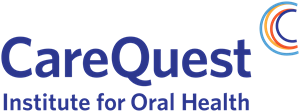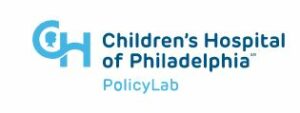The Dental Quality Alliance released two measures that are intended to assess the extent to which pregnant persons are accessing the dental care delivery system. The measures also assess routine care that includes examination, risk assessment, diagnosis, and treatment planning.
Rural Pennsylvania: Building Healthier Communities for the People Who Power America

By Bob Morgan, Pennsylvania State Director USDA Rural Development
As we celebrate National Rural Health Day this year, we are reminded that a strong community is rooted in its people. The Biden-Harris Administration is committed to serving those who live in the rural areas of this country, like the small towns and communities right here in Pennsylvania.
At the United States Department of Agriculture, we are hard at work offering the resources to the rural and agricultural communities that feed and fuel our nation and provide the everyday essentials upon which America depends.
As I’ve traveled across Pennsylvania, I’ve seen firsthand the unique challenges people in rural communities and remote parts of the state have in accessing the health resources they need and deserve.
“More than 130 rural hospitals have closed over the past decade, and over 600 additional rural hospitals — more than 30% of all rural hospitals in the country — are at risk of closing in the near future,” according to a report from the Center for Healthcare Quality and Payment Reform.
It is part of my job to see what we can do as an agency to address problems such as this.
At USDA Rural Development, we are committed to making sure that people, no matter where they live, have access to high-quality and reliable health care services like urgent care, primary care, and dental care. That’s why I’ve been a proud champion of programs like the Emergency Rural Health Care Grants, created by President Biden’s historic legislative package, the American Rescue Plan Act.
In the past year, this program has helped rural health care organizations across the commonwealth purchase supplies, deliver food assistance, renovate health care facilities, and provide people with reliable medical testing and treatment.
These funds are helping save lives every day. For example, in April of this year, USDA awarded 18 Pennsylvania healthcare organizations a total of $10.5 million through our Emergency Rural Health Care Grant program. In Pittston, Pa., the ambulance service association received $226,000 of these funds for necessary lifesaving equipment such as heart monitors, automatic CPR machines, and loading devices for the ambulances.
On a larger scale, on Nov. 21, 2021, USDA partnered with St. Luke’s Health Network to open the first hospital in Carbon County in 65 years. The trauma-4 facility treated 17,324 emergency care patients thus far this year, thanks to a $98.5 million Community Facilities direct USDA loan investment for the project and a $16 million guaranteed loan.
Local healthcare officials said they are confident the three-story, 80-patient-room, 160,000-square-foot facility, has redefined health care access, convenience, and quality in northeastern Pennsylvania. Again, we are committed to saving lives and improving quality of life in our local rural communities.
We also know that increasing access to telemedicine and distance learning in rural Pennsylvania is critical to building healthier and more resilient communities.
People in remote parts of the state often need to travel greater distances to see a health care provider, are less likely to have access to high-speed internet to utilize telehealth services and are more likely to live in an area that has a shortage of doctors, dentists, and mental health providers.
Through programs like the Distance Learning and Telemedicine Grants Program, we are making it easier for people living in rural areas to access health care services remotely. In 2022, Rural Development funded three DLT projects in Pennsylvania that impacted more than 80,000 people in central and western Pennsylvania. Our funding share for the three projects totaled more than $1 million.
Health is about much more than medical care. Access to modern, reliable water and wastewater infrastructure is a critical necessity for the health and well-being of every American.
In Pennsylvania, we continue to work hand-in-hand with our partners and local community leaders to promote a healthy community and environment through our Water and Environmental Programs.
These programs help rural communities obtain the technical assistance and capital financing necessary to develop clean and reliable drinking water and waste disposal systems. Safe drinking water and sanitary waste disposal systems are vital not only to public health, but also to the economic vitality of rural America.
Through these programs, we make sure people, children and families across the state have clean water and safe sewer systems that prevent pollution and runoff.
For example, in March the South Wayne Water and Sewer Authority received a Water and Waste Disposal Loan and Grant of $14,879,000 to upgrade their wastewater treatment plant for their public sewer system. The plant currently serves residential communities located in Salem and Lake Townships, Pa. The plant is more than 40 years old, and the components have reached the end of their useful life.
USDA Rural Development is a partner who invests in keeping rural people healthy. Join us this National Rural Health Day, Thursday, Nov. 17 as we celebrate the power of rural. You can learn more about our programs by visiting our website or by calling 717-237-2153.
New Index Assesses Addiction Recovery Environment in Every County
 A new index is designed to assess the “recovery environment” in each U.S. county. The Index from the Center for Rural Health Research at East Tennessee State University called the Recovery Ecosystem Index Mapping Tool drills down to the county level to assess drug recovery systems across the country. The tool provides information on the availability of different treatment options, support systems for people in recovery, and social factors such as housing costs, transportation, and more.
A new index is designed to assess the “recovery environment” in each U.S. county. The Index from the Center for Rural Health Research at East Tennessee State University called the Recovery Ecosystem Index Mapping Tool drills down to the county level to assess drug recovery systems across the country. The tool provides information on the availability of different treatment options, support systems for people in recovery, and social factors such as housing costs, transportation, and more.
The mapping tool, created in association with the National Opinion Research Center (NORC) at the University of Chicago and the Fletcher Group, shows the recovery resources available in every county in the United States. The index then rates each county by comparing resources and demographic information against the county’s overdose mortality rates.
“The index is intended to serve local stakeholders to help them better understand the availability of recovery-related resources in their county and neighboring counties,” said Andrew Howard with the Fletcher Group in an email interview.
Researchers hope the index can also be used to develop best practices for use in other communities, as well as be used by policymakers to better understand how services are distributed, and how they can target counties that lack resources.
“We are hoping that people at the community level will use this tool to first determine the recovery ecosystem score for their community, but then to dig into the data to really understand where they can invest to create a better support system for their people,” said Michael Meit, co-director of the Center for Rural Health Research and one of the researchers on the project.
American Dental Public Health Group Launches Veterans Oral Health Initiatives
Did you know veterans experience poorer oral health outcomes compared to non-veterans? The American Institute for Dental Public Health (AIDPH) has been working hard to improve oral health for American veterans. Their latest initiatives include the Veteran Oral Health Dashboard and a veterans oral health listserv. AIDPH is also asking for help in disseminating their second survey focused on giving space to veterans to share their oral health stories. If you work with veterans, please consider sharing the survey. Veteran voices are crucial in education and advocacy efforts.
Click here to view the dashboard.
Click here to join the listserv.
Click here for the veteran survey.
Report Highlights Lessons from Dental Utilization During the Pandemic
 The CareQuest Institute for Oral Health released a visual report examining dental procedure utilization during the COVID-19 pandemic, using Medicaid and commercial insurance claims data to find differences in trends by age and insurance type. The authors note a need for the oral health profession to maintain a state of emergency readiness to be able to provide consistent care in the face of future public health emergencies.
The CareQuest Institute for Oral Health released a visual report examining dental procedure utilization during the COVID-19 pandemic, using Medicaid and commercial insurance claims data to find differences in trends by age and insurance type. The authors note a need for the oral health profession to maintain a state of emergency readiness to be able to provide consistent care in the face of future public health emergencies.
Pennsylvania Secretary of Health Highlights Benefits of Community Water Fluoridation During Visit to Shippensburg

Pennsylvania Physician General and Acting Secretary of Health Dr. Denise Johnson was in Shippensburg last week speaking to the safety and benefits of community water fluoridation. In the last few years, Shippensburg faced a fluoridation rollback threat that was overcome with the help of local oral health stakeholders. Dr. Johnson and the Pennsylvania Department of Health are encouraging water systems that do not currently fluoridate to consider initiating for the best interest of their customers. Executive Director Helen Hawkey and Public Health Dental Director Dr. Jonise McDaniel were in attendance.
In Victory for Older Foster Youth, HB 1866 Signed into Law

Pennsylvania Partnerships for Children’s (PPC) priority legislation HB 1866 passed in the last week of the legislative session and was signed into law by Gov. Wolf on November 3rd. Sponsored by Rep. Boback (R-Luzerne), the new law will improve permanency practices for transition age youth in the foster care system. The legislation was introduced in two consecutive legislative sessions, and we are grateful for Rep. Boback’s sponsorship in helping the bill reach the finish line.
Transition age youth are older youth in the foster care system (ages 14 to 21) transitioning to permanency with a caregiver or aging out of the system to adulthood. These young adults often struggle with this life transition. The new law will help foster youth find permanency by:
- Documenting family finding efforts for youth when they are no longer in the system.
- Expanding opportunities for permanency by increasing the age of the goal of Another Planned Permanent Living Arrangement (APPLA) from 16 to 18 years of age.
- Enhancing court accountability regarding suitable transition plans and overseeing services provided to aid in the transition to adulthood.
- Maintaining supportive adult connections to assist transition age youth with building a social safety net when paid professionals are no longer involved.
- Improving data collection to streamline child welfare data from all 67 counties at the state level.
PPC is proud to have helped shepherd HB 1866 through the General Assembly to be signed into law by Gov. Wolf. We will continue to work to improve Pennsylvania’s child welfare system so that foster youth have the opportunity to succeed in life.
Philadelphia Children’s Hospital’s PolicyLab Launches Interactive Platform on Rural Maternal and Child Health

During this year’s National Rural Health Week, PolicyLab will be debuting Our Rural Pennsylvania, an online interactive atlas created by mothers and caregivers to record the everyday places that influence their family’s health. Nearly three years in the making, Our Rural Pennsylvania is the public-facing output of a research project, ‘Understanding the Role of Place in Health and Well-being for families – a Photovoice Project by Moms’. The interdisciplinary project identifies rural-relevant policies and investments to improve maternal and child health in rural communities. Learn more about the project here.
Please join us virtually on November 17 at 5:30pm to celebrate the website launch, hear about the project, and learn about how to use the interactive resource as a resource to advocate for building healthy rural communities. Please RSVP here.
Low-Volume Emergency Departments are More Likely to Use Telehealth for Sepsis Care in a National Rural Telehealth Network
A Research & Policy Brief is available from the Rural Telehealth Research Center:
Sepsis is an expensive disease that is responsible for over 270,000 deaths in the U.S. annually. Early and aggressive treatment with antibiotics and hemodynamic resuscitation have been associated with improved outcomes, but many sepsis patients do not receive guideline-concordant care. Patients treated in low-volume emergency departments (EDs) have 38% higher mortality than those in high-volume EDs suggesting that volume is associated with elements of care that improve survival. Provider-to-provider ED-based telehealth (tele-ED) has been one strategy proposed to improve sepsis care in low-volume EDs. In tele-ED, local ED staff can request consultation with a remote physician and nurse who can connect using a 24-hour on-demand high-definition video connection allowing remote staff to see a patient, review records, provide advice, arrange for inter-hospital transfer, and provide clinical documentation. By connecting a clinician in a high-volume hospital with a care team in a low-volume hospital, rural sepsis patients and providers may benefit from high-volume experience and training even in a local rural facility.
The purpose of this study was to (1) report on the prevalence of tele-ED use for sepsis care across an established network, (2) quantify variation in use between hospitals, and (3) identify predictors of tele-ED consultation in tele-ED-capable hospitals.
USDA Seeks Applications to Support Regional Economic and Community Development Planning to Create Thriving Communities for Rural People

U.S. Department of Agriculture (USDA) Rural Development Under Secretary Xochitl Torres Small announced that USDA is seeking applications to implement regional economic and community development projects to create thriving communities for people in rural America.
The 2018 Farm Bill authorized USDA to make this funding available under the Strategic Economic and Community Development (SECD) initiative to support projects that will help rural people and economies prepare for the future. It can be used to implement projects that are included in multi-jurisdictional and multi-sectoral strategic community investment plans. To learn more, watch USDA’s SECD Initiative video.
